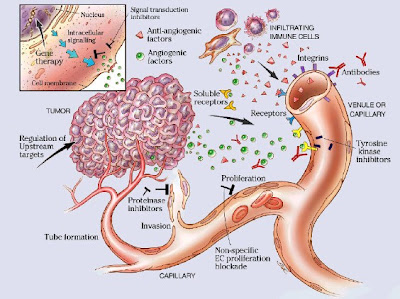Bone Cancer Symptoms Biography
Source(google.com.pk)
Caring.com User - Melanie Haiken
Send a Hug or Prayer
See full bio
96% helpful
Melanie Haiken answered...
Bone cancer can have many different signs and symptoms because there are several types of bone cancer. There is cancer that originates in the bone, called primary bone cancer, and See also:
What are the signs of bone cancer?
See all 1930 questions about Cancer there are tumors that spreads, or metastasizes, from other locations such as the breast, lungs, or prostate, to the bone. This is called metastatic or secondary bone cancer. Primary bone cancer is very rare (only 2500 cases per year) and is more common among children and young adults, but secondary bone cancer is more common among older adults. Multiple myeloma and leukemia are cancers of the bone marrow, the cells within bone that produce blood, so they have different symptoms.
The most common symptom of bone cancer is pain. Bone cancer pain is different than other types of pain because it may worsen at night, or during or after physical activity. It also tends to remain constant, unlike joint or muscle pain that you’d expect to wax and wane. Other signs of bone cancer include:
A lump
Tenderness in one spot
Swelling
An unexpected fracture because the bone is weakened
Anemia
Fever and chills
Weight loss
If you’re concerned about possible bone cancer, ask your doctor to order scans and blood tests. It’s particularly important to insist on tets if you are battling cancer in another area of your body or are a cancer survivor. If tests indicate possible cancer, a bone biopsy may be performed.
Other signs reported by bone cancer patients:
Some of the early signs of bone cancer may be confused with arthritis and other conditions. Some bone cancer patients report:
Bone Cancer Symptoms
Sign Ribbon cells Horoscope Symbol Tattoos Research Zodiac Sign Ribbon Tattoos

Bone Cancer Symptoms
Sign Ribbon cells Horoscope Symbol Tattoos Research Zodiac Sign Ribbon Tattoos

Bone Cancer Symptoms
Sign Ribbon cells Horoscope Symbol Tattoos Research Zodiac Sign Ribbon Tattoos

Bone Cancer Symptoms
Sign Ribbon cells Horoscope Symbol Tattoos Research Zodiac Sign Ribbon Tattoos

Bone Cancer Symptoms
Sign Ribbon cells Horoscope Symbol Tattoos Research Zodiac Sign Ribbon Tattoos

Bone Cancer Symptoms
Sign Ribbon cells Horoscope Symbol Tattoos Research Zodiac Sign Ribbon Tattoos

Bone Cancer Symptoms
Sign Ribbon cells Horoscope Symbol Tattoos Research Zodiac Sign Ribbon Tattoos
Bone Cancer Symptoms
Sign Ribbon cells Horoscope Symbol Tattoos Research Zodiac Sign Ribbon Tattoos

Bone Cancer Symptoms
Sign Ribbon cells Horoscope Symbol Tattoos Research Zodiac Sign Ribbon Tattoos

Bone Cancer Symptoms
Sign Ribbon cells Horoscope Symbol Tattoos Research Zodiac Sign Ribbon Tattoos























